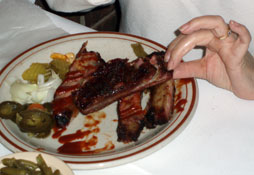By Thenisha Smith/reporter
Test anxiety can cause headaches, heart palpitations, hives, welts and even upset stomachs, South Campus students learned last week.
Annie Dobbins presented How to Take a Test and Pass, a seminar sponsored by the South Campus counseling office, Feb. 13.
“ That type of anxiety is born out of our fear of failure,” she said.
Dobbins said tests should be approached like a baby learning to walk; they fall but they get back up. “ If you fail a test, don’t stop,” she said. “Work harder for the test.”
Three steps in successful test taking are what students do before the test, what they do during the test and what they do after the test.
Prior to a test, students can do several things to help them pass the test, Dobbins said. The first is to have an academic study method in place for the particular subject.
Taking notes while reading the textbook is the second thing students can do. Students also should take good lecture notes during class and should repeat this process during the weeks leading up to a test.
Getting plenty of rest, having a positive attitude about the subject and studying ahead of time will help students pass tests, Dobbins said.
The most important tip for the student during a test is to read and understand the test directions, Dobbins said. After reading the test, students should decide how to use their time, which questions will require more attention. Students should answer the easy questions first then answer the ones that they do not know.
Dobbins said other test takers should be ignored to prevent distractions. Once all the questions are answered, students should carefully check all answers.
During a true-false test, students should assume all answers are true unless they know the statements to be false. True-false questions with modifiers such as always, only and none should be considered false, she said.
When taking a matching test, Dobbins said, students should use logical clues to guess some correct answers. Students can decide what type of answer is required for fill-in-the-blank questions by looking at the number of blanks. If there are two blanks, the answer requires two words or phrases, and if the blank is preceded by the word an, the answer should began with a vowel.
Dobbins cautioned students to read directions for essay tests carefully. Then they should choose their major points and write a clear introduction.
The final tip for answering an essay question is to write a complete and well-organized answer.
After the test, students should learn from all incorrect answers. This is especially true if there is a comprehensive final, Dobbins said.

























